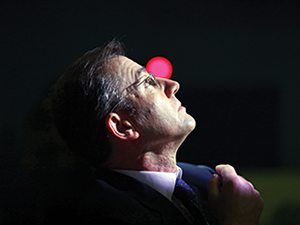
GLENCORE CEO, Ivan Glasenberg, declared the UK-listed group has “never been so well positioned” as it was today following publication of its full-year figures for 2016 in which it returned to profitability and almost halved net debt.
Glasenberg added that the company had several low cost copper and zinc growth options and that given the stimulus efforts of the Chinese economy, it generally had the right mineral exposure to capitalise on commodity price recovery. It pointedly added that it had no plans to embark on greenfields expansion.
Net income attributable to shareholders came in at $1.38bn which compares to a $5bn loss in the 2015 financial year – a period in which Glencore was censured by investors for an overburdened balance sheet. By December 31, Glencore had taken out $14.7bn in debt in 18 months leaving net debt at $15.5bn. It had also extracted $1.3bn in cost savings at its industrial (mining) assets.
Glasenberg was bullish on physical demand for commodities saying that political events have coincided with the expectation of higher inflation and interest rates. “The likelihood of various regionally signalled fiscal economic stimulus programs should also promote improved physical demand for and positive sentiment towards commodities,” he said.
On a pretax basis, Glencore produced an 18% improvement on adjusted earnings before interest, tax, depreciation and amortisation (Ebitda) of $10.3bn of which $7.3bn was from the industrial assets.
It guided towards future capital expenditure of $4bn going forward of which $3bn was on stay in business capital and that no greenfields developments were planned reflecting the group’s conservative approach to new supply.
Since the beginning of the year, the group was unveiled two acquisitions in which it has increased its ownership of existing investments.
In February, it said it would buy full control of Mutanda Mining, a copper producer in the Democratic Republic of Congo, and lift its stake in the country’s Katanga Mining for a net cash investment of $534m.
A month earlier, it unveiled plans to join its 9% shareholder Qatar Investment Authority (QIA) in a €10.5bn swoop for 19.5% of Russian oil company, Rosneft.
Bernstein analyst, Paul Gait, Glencore’s “no greenfields” approach to expansion should not come as a surprise, he said this statement “derisks the capital allocation for future years, even at higher commodity prices”.
“The revenue line remains uncertain given the volatility in commodity prices but at least capex is known. Despite the rebound in commodity prices, Glencore remains committed to keep markets balanced,” said Gait.
Responding to questions during a results presentation with analysts today, Glasenberg offered a straight bat to a question as to whether the group was more “wild” than its peer group in its merger and acquisition activity.
“We are not wild. I don’t like greenfields; as much as we can avoid we will avoid, but as a company we started from nothing and that is the way [through merger and acquisition] this company was developed,” he said. “But it was not wildly.”
Glasenberg acknowledged Glencore had occasionally got an acquisition wrong, such as its $135bn acquisition of Caracal Eenrgy in Chad which it later wrote down for $790m.
“But we haven’t got many wrong. We are always looking. We see an opportunity before competitors because we deal with the suppliers so we know what they are doing … and if they have financial difficulties,” he said.
Glencore has recommended a dividend payment of $1bn in the current financial year and the same for 2018 to which it could add a 25% payout from its industrial assets.
“The defining feature of the numbers is the strong cash flow with net debt coming in at $15.5bn ahead of consensus and guidance of $16.5-17.5bn; net funding of $32.6bn was slightly above guidance ($31-32bn) due to working capital build of $2.4bn ahead of expectations reflecting higher commodity prices,” said Barclays in a morning note.











